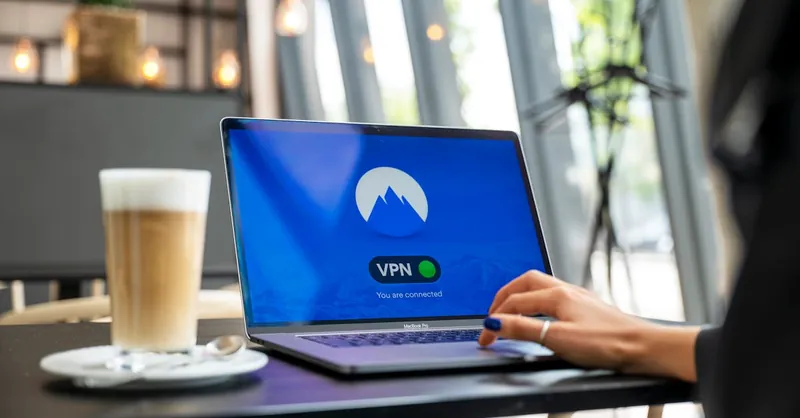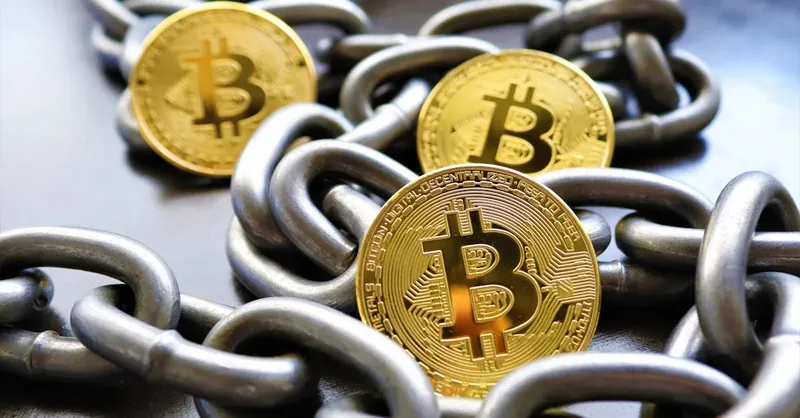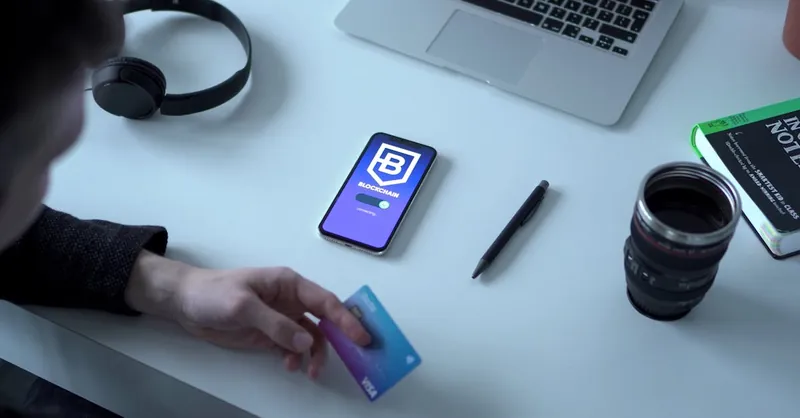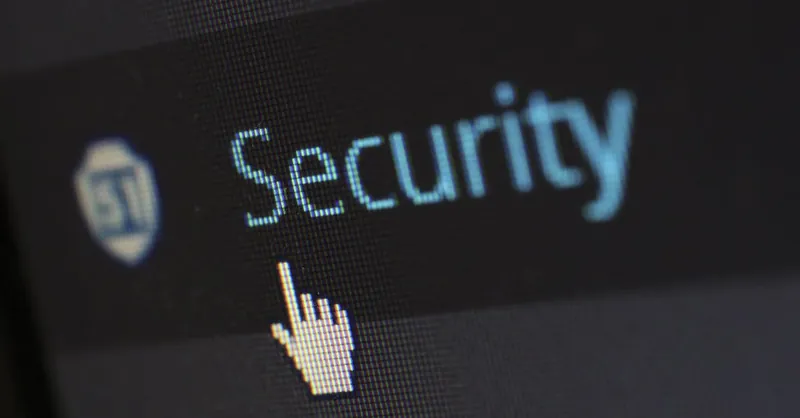How to Keep Your Crypto Safe from Hackers: Ultimate Guide
Category: Cryptocurrency
Mastering Crypto Security: Protect Your Assets from Hackers
Navigating the world of cryptocurrency can be thrilling but also fraught with risk, especially from cyber threats targeting your digital assets. Whether you’re just starting with Bitcoin or a seasoned altcoin investor, the fear of hackers infiltrating your wallets and exchanges is very real. Perhaps you’ve landed here seeking definitive, practical advice on how to bulletproof your crypto holdings against those sophisticated attackers. This guide is crafted precisely for you—whether you’re an enthusiast mining coins or a savvy trader speculating on the market. We understand your concern: the pain of losing crypto to hacks is not just financial but a breach of trust and comfort. Unlike other articles that skim over basic security tips, this post dives deep into actionable strategies, from cold storage solutions to multi-factor authentication best practices, tailored for every experience level. We’ll also demystify common vulnerabilities and introduce the latest security tools to keep your investments safe. Read on to discover comprehensive and easy-to-implement steps to defend your digital fortune, ensuring you can focus on growing your portfolio instead of battling threats.
- Mastering Crypto Security: Protect Your Assets from Hackers
- Understanding the Threat Landscape: Common Hacker Techniques and Crypto-Specific Vulnerabilities
- Choosing Secure Wallets: Hardware, Software, and Paper Wallets Explained
- Implementing Strong Authentication: Two-Factor and Multi-Factor Authentication to Secure Your Crypto Accounts
- Safe Storage Practices: How to Use Cold Storage and Manage Private Keys Responsibly
- Recognizing and Avoiding Phishing and Social Engineering Attacks: Spotting Fake Websites, Scam Communications, and Malware
- Securing Your Devices and Networks: Antivirus, VPNs, Updates, and Public Wi-Fi Risks
- Backup and Recovery Strategies: Creating Secure Backups and Disaster Recovery Plans for Your Crypto Assets
- Best Practices for Exchanges and Trading Platforms: Selecting Reputable Platforms and Securing Your Trading Activity
- Utilizing Crypto Security Tools and Services: Wallets with Biometric Security, Multisig Wallets, and Trusted Custodial Services
- Staying Updated: Continuously Learning About New Threats and Security Improvements
Understanding the Threat Landscape: Common Hacker Techniques and Crypto-Specific Vulnerabilities
Before diving into protection strategies, it’s crucial to grasp the common tactics hackers use to exploit cryptocurrency users and identify the unique vulnerabilities of the crypto ecosystem. Cybercriminals often leverage a combination of sophisticated methods to infiltrate wallets, exchanges, and individual devices, turning even the most cautious investors into victims. One of the most prevalent techniques includes phishing attacks, where attackers impersonate legitimate services to steal login credentials or private keys through fake emails, websites, or messaging platforms. Additionally, malware and keyloggers remain a serious threat — these malicious programs quietly gain access to sensitive information stored on your devices without your knowledge.
Cryptocurrency-specific vulnerabilities also stem from the decentralized and pseudonymous nature of blockchain technology. Unlike traditional banks, there are no central authorities to reverse fraudulent transactions once a hacker gains control. This makes private key theft, often through weak or reused passwords, one of the most dangerous crypto vulnerabilities. Moreover, poorly secured smart contracts, which power many altcoins and decentralized finance (DeFi) applications, can have exploitable bugs that hackers actively seek to exploit. Another significant threat is exchange hacks, where centralized platforms are breached, resulting in massive loss of user funds. Understanding these common attack vectors is the first step to reinforcing your defenses and ensuring your crypto assets remain secure in an ever-evolving threat landscape.

Image courtesy of Mikhail Nilov
Choosing Secure Wallets: Hardware, Software, and Paper Wallets Explained
Selecting the right crypto wallet is a critical step in safeguarding your digital assets. Wallets serve as the bridge between you and your cryptocurrencies, holding the all-important private keys that control access to your funds. Understanding the differences between hardware wallets, software wallets, and paper wallets, along with their security features, will empower you to pick the safest option tailored to your needs.
Hardware Wallets: The Gold Standard in Security
Hardware wallets are physical devices designed to securely store private keys offline, making them immune to online hacking attempts like phishing or malware infections. Popular options such as Ledger Nano X and Trezor Model T protect your keys within a tamper-proof environment and require physical confirmation for every transaction. Because these wallets never expose your private keys to your computer or internet-connected device, they are widely considered the safest choice for long-term storage and large crypto holdings.
Why choose hardware wallets?
- Keeps private keys offline (cold storage)
- Resistant to malware and remote hacking attempts
- Requires physical interaction to authorize transactions
- Supports multiple cryptocurrencies and tokens
Software Wallets: Convenient but Riskier
Software wallets run as applications on your desktop or mobile device, offering quick access and user-friendly interfaces ideal for frequent traders or small amounts of crypto. Wallets like Exodus, Electrum, and MetaMask provide integrated portfolio management and instant transactions but store private keys on internet-connected devices, making them more vulnerable to malware, phishing attacks, and device theft.
Key considerations for software wallets:
- Easier access and convenient for daily use
- Must secure your device with strong passwords and updated antivirus
- Best paired with multi-factor authentication for enhanced security
- Consider cold storage for sizable crypto balances
Paper Wallets: The Old-School Cold Storage Method
A paper wallet involves printing your public and private keys on a physical sheet, which is then stored offline. While this eliminates digital hacking risks entirely, paper wallets are highly vulnerable to physical damage, loss, or theft and lack the flexibility for everyday transactions. Generating and managing paper wallets also demands careful attention to avoid exposing private keys during creation.
When paper wallets make sense:
- Long-term storage with zero online exposure
- Backup method for added redundancy
- Requires secure physical storage (e.g., fireproof safe)
Which Wallet Should You Pick?
To choose the safest wallet option, consider your trading habits, technical proficiency, and security priorities:
| Wallet Type | Best For | Security Level | Convenience |
|---|---|---|---|
| Hardware Wallet | Long-term storage, large holdings | Very High (offline keys) | Medium (physical device needed) |
| Software Wallet | Everyday use, small amounts | Moderate (connected devices) | High (instant access) |
| Paper Wallet | Cold storage backups | High (offline but physical risk) | Low (manual handling required) |
For most users, a combination of hardware wallets for savings and software wallets for spending and trading provides an optimal balance between security and ease of use. Remember, whatever wallet you choose, always keep your recovery seed phrase secure and never share your private keys.
By carefully selecting your wallet type and understanding its security implications, you take a major leap toward fortifying your crypto assets from hackers and cyber threats.

Image courtesy of Worldspectrum
Implementing Strong Authentication: Two-Factor and Multi-Factor Authentication to Secure Your Crypto Accounts
In the battle against hackers, one of the most effective defenses you can implement is strong authentication methods, particularly Two-Factor Authentication (2FA) and its more robust counterpart, Multi-Factor Authentication (MFA). Crypto exchanges, wallets, and platforms become significantly safer when you add an extra verification step beyond just a password. Given that many cyber attacks exploit weak or stolen passwords, relying solely on passwords leaves your account vulnerable to credential stuffing, phishing, and brute-force attacks.
Why Two-Factor Authentication is Essential for Crypto Security
With 2FA enabled, logging into your crypto accounts requires two pieces of evidence to verify your identity:
- Something you know (e.g., your password)
- Something you have (e.g., a code from your mobile authenticator app or a hardware security key)
This extra layer of security ensures that even if your password is compromised, a hacker cannot access your account without the second factor. The most common and secure 2FA methods include:
- Authenticator apps (Google Authenticator, Authy, Microsoft Authenticator) generate time-sensitive codes on your device that hackers cannot intercept remotely.
- Hardware security keys (YubiKey, Titan Security Key) offer near-impenetrable security by requiring physical interaction to confirm account access.
Avoid using SMS-based 2FA where possible, as SMS messages can be intercepted or subject to SIM swapping attacks that many hackers use to bypass security protections.
Beyond 2FA: The Power of Multi-Factor Authentication (MFA)
While 2FA provides a vital extra safeguard, some wallets and exchanges support MFA, requiring more than two forms of verification, such as combining:
- Password + authenticator app + biometric verification (fingerprint or facial recognition)
- Password + hardware security key + biometric confirmation
MFA is especially recommended for high-net-worth investors or users managing multiple accounts and sensitive private keys. It provides exponential security enhancements, making unauthorized access virtually impossible even if multiple credentials are compromised.
Best Practices to Implement Strong Authentication
- Always enable 2FA or MFA on all crypto-related accounts, including exchanges, wallets, and email addresses linked to crypto services.
- Use authenticator apps instead of SMS to avoid SIM swapping risks.
- Regularly backup your 2FA recovery codes and store them securely offline, so you aren’t locked out if you lose your device.
- Combine strong authentication with a password manager to maintain complex, unique passwords for every crypto account.
- Stay vigilant for suspicious login attempts and immediately change your credentials if you detect unauthorized access.
By adopting two-factor or multi-factor authentication, you significantly reduce the probability of hackers infiltrating your crypto accounts, making this a non-negotiable step in safeguarding your digital fortune. This simple yet powerful security layer complements other defenses—like secure wallets and cautious phishing awareness—forming a robust shield against the evolving threats targeting the crypto world.

Image courtesy of Morthy Jameson
Safe Storage Practices: How to Use Cold Storage and Manage Private Keys Responsibly
One of the most critical components of keeping your crypto safe from hackers is mastering safe storage strategies, particularly through the use of cold storage and responsible private key management. Cold storage means keeping your private keys entirely offline, eliminating any chance of a remote breach by hackers exploiting internet connectivity. This method is essential for long-term holding of Bitcoin, altcoins, and tokens, especially when storing significant amounts of cryptocurrency.
Embrace Cold Storage for Maximum Security
Cold storage options include hardware wallets, paper wallets, and even air-gapped computers that never connect to the internet. Using cold storage drastically reduces your exposure to phishing attacks, malware, and hacking intrusions common on internet-connected devices. Here are some best practices to maximize cold storage benefits:
- Use a reputable hardware wallet (like Ledger or Trezor) as your primary cold storage device, ensuring the firmware is always updated.
- When creating paper wallets, generate and print them on an offline, secure computer, then physically secure the paper wallets in fireproof and waterproof safes or safety deposit boxes.
- Store multiple backup copies of your private keys or seed phrases in geographically separated, secure locations to avoid total loss from theft or disaster.
- Consider using air-gapped devices—computers that never connect to the internet—to generate private keys and perform offline transactions for added peace of mind.
Responsible Private Key Management Is Non-Negotiable
Your private keys are the ultimate gateway to your crypto wealth, and anyone with access to them can steal your funds without recourse. Therefore, managing these keys responsibly is paramount. Follow these key guidelines:
- Never share your private keys or seed phrases with anyone, including seemingly trustworthy sources or customer support representatives.
- Use strong passphrases when possible, especially if your wallet supports encryption of seed phrases or private keys.
- Avoid storing private keys in cloud storage, email drafts, or plain text files on internet-connected devices where they can be hacked or leaked.
- Regularly audit your key backups to ensure they have not degraded or become inaccessible due to forgotten storage locations or damaged media.
- Use multi-signature wallets where possible, which require multiple private keys to authorize transactions. This adds an additional security layer by distributing trust across different devices or holders.
By integrating cold storage techniques with responsible private key custody, you create an impregnable fortress around your crypto assets. This dual approach protects you from the most common causes of crypto theft and is a cornerstone of advanced crypto security practices for investors of all experience levels.

Image courtesy of Jakub Zerdzicki
Recognizing and Avoiding Phishing and Social Engineering Attacks: Spotting Fake Websites, Scam Communications, and Malware
One of the most insidious threats to your cryptocurrency security is phishing and social engineering attacks. These attacks prey on human psychology rather than technical vulnerabilities, tricking you into revealing sensitive information like private keys, passwords, or 2FA codes. Cybercriminals craft convincing fake websites, emails, or messages that appear to be from trusted crypto exchanges, wallet providers, or even fellow investors. Falling victim to these scams can result in immediate loss of funds, as your credentials are directly handed over to hackers.
How to Spot Phishing Attempts and Fake Websites
Phishing attacks often rely on subtle inconsistencies and urgent calls to action. To protect yourself, always double-check the authenticity of websites and communications by following these guidelines:
- Verify the URL carefully: Always ensure you are visiting the correct website domain. Hackers create nearly identical scam websites with slight misspellings or unusual domain extensions such as
.netinstead of.com. - Look for HTTPS and security certificates: Legitimate sites use HTTPS with a valid SSL certificate, visible as a padlock icon in your browser’s address bar. However, remember that HTTPS alone does not guarantee safety—always combine this with domain verification.
- Beware of unsolicited links and attachments: Avoid clicking on links or downloading files from emails, social media, or messaging apps unless you have confirmed their source by visiting the official site directly.
- Watch for urgent or threatening language: Phishing messages often pressure you to act quickly to avoid account suspension or loss of funds, a classic tactic to bypass critical thinking.
Defending Against Social Engineering and Malware
Hackers frequently combine phishing with social engineering tactics that manipulate your emotions or trust to extract private information. These may include fake tech support calls, impersonations of friends or influencers, or deceptive airdrop and giveaway scams.
To safeguard yourself effectively:
- Never share your private keys, seed phrases, or passwords, regardless of who requests them—even if the request appears to come from an official support channel. No legitimate entity will ask for these.
- Use anti-phishing features available on certain wallets and browsers, such as warnings about suspicious sites or integrated scam reporting.
- Keep your device’s operating system, antivirus, and anti-malware software up to date to detect and block malware designed to log keystrokes or hijack crypto transactions.
- Be cautious about the information you share publicly on social media or crypto forums, as attackers may gather data to personalize their scams and improve their chances of success.
By cultivating a healthy skepticism and adopting these practices to spot and avoid phishing and social engineering attempts, you can dramatically reduce the risk of falling victim to crypto scams. Combining technical safeguards with vigilant behavior forms a critical frontline defense in your overall crypto security strategy.

Image courtesy of Markus Winkler
Securing Your Devices and Networks: Antivirus, VPNs, Updates, and Public Wi-Fi Risks
Your cryptocurrency security is only as strong as the devices and networks you use to access your wallets, exchanges, and crypto services. Hackers often exploit vulnerabilities in unprotected devices or unsecured internet connections to steal passwords, private keys, and sensitive data. Therefore, securing your devices and using safe networks are fundamental steps to minimize your exposure to cyber threats targeting cryptocurrency users.
Use Robust Antivirus and Anti-Malware Software
Installing a reputable antivirus and anti-malware program is your first defense against malicious software designed to infiltrate your system. Malware such as keyloggers, trojans, and ransomware specifically target cryptocurrency owners by recording keystrokes, capturing screenshots, or manipulating transactions. To keep your devices clean and secure:
- Choose well-reviewed antivirus software with real-time scanning and automatic updates.
- Regularly run full system scans to detect hidden threats early.
- Avoid downloading software, especially crypto tools or wallets, from unverified sources—only use official websites or trusted app stores.
- Enable firewalls to monitor and block unauthorized access attempts.
Protect Your Privacy and Data with a VPN
When accessing crypto-related accounts over the internet, especially on public or untrusted networks, a Virtual Private Network (VPN) encrypts your connection, masking your IP address and preventing network eavesdropping or man-in-the-middle attacks. VPNs are essential for:
- Securing transactions and logins when you are away from home or using public Wi-Fi.
- Bypassing internet restrictions safely in restrictive countries.
- Avoiding targeted attacks that rely on tracking your online activity.
Opt for VPN providers with a strict no-logs policy and strong encryption standards, and always connect to the VPN before accessing any wallet or exchange.
Keep Software and Operating Systems Up to Date
Outdated software is a prime target for hackers, as security vulnerabilities are continuously discovered and patched by developers. Your crypto security improves drastically by:
- Regularly installing updates for your operating system, browser, wallets, antivirus, and other critical apps.
- Enabling automatic updates where possible to avoid forgetting critical patches.
- Avoiding beta or untrusted software versions that may contain unresolved security flaws.
Avoid Using Public Wi-Fi for Crypto Activities
Public Wi-Fi networks, such as those in cafes, airports, or hotels, are notoriously insecure and highly susceptible to hackers who lurk on the same network to intercept data or inject malware. Never log into exchanges, wallets, or email accounts linked to your crypto holdings without secure protection.
If you must use public Wi-Fi:
- Always connect through a trusted VPN before accessing any accounts.
- Avoid performing critical crypto transactions or revealing sensitive information while on public networks.
- Consider using mobile data hotspot connections, which are typically more secure than open Wi-Fi.
By combining strong antivirus protection, VPN usage, consistent software updates, and avoiding risky public Wi-Fi, you dramatically enhance the security posture of your devices and prevent hackers from exploiting network or device weaknesses to compromise your cryptocurrency assets. This proactive approach ensures that your crypto environment remains resilient against the many digital threats present in today’s interconnected world.

Image courtesy of Stefan Coders
Backup and Recovery Strategies: Creating Secure Backups and Disaster Recovery Plans for Your Crypto Assets
In cryptocurrency management, backup and recovery strategies are as crucial as securing your wallets and accounts. Since crypto transactions are irreversible and private keys are the sole access to your funds, losing access due to device failure, loss, or theft can be catastrophic. Establishing secure backups and an effective disaster recovery plan ensures you retain control over your crypto assets even in worst-case scenarios.
Why Backups Are Essential for Crypto Security
Unlike traditional banking, crypto assets rely entirely on your private keys and seed phrases. If these credentials are lost or corrupted, your funds become permanently inaccessible. Hackers, hardware malfunctions, accidental deletions, or natural disasters can all compromise your access. Therefore, creating multiple, secure backups of your wallet recovery phrases and private keys is non-negotiable.
Best Practices for Creating Secure Backups
- Use multiple backup copies: Store at least two or three copies of your seed phrases or private keys in separate, geographically-distributed, secure locations to mitigate risks like theft, fire, or flood.
- Opt for durable storage methods: Rather than writing backup phrases on paper alone, consider using metal seed phrase storage devices that are resistant to water, fire, and physical damage for long-term safety.
- Encrypt backup data when digital: If you must store backups digitally (e.g., on encrypted USB drives), ensure they are strongly encrypted with complex passwords and never saved on cloud services or shared devices.
- Keep backups offline: Always maintain backups offline, disconnected from any network, to prevent remote hacking or ransomware attacks.
Developing a Disaster Recovery Plan
Beyond creating backups, a structured disaster recovery plan aligns your backup strategy with clear steps for asset restoration in case of emergency. This plan should include:
- Clear documentation of where and how backups are stored (without directly exposing seed phrases or keys) so you or trusted individuals can access them when needed.
- Instructions for restoring wallets on new hardware or software to avoid confusion during stressful recovery moments.
- A trusted and discreet confidant or legal arrangement (like a crypto inheritance plan) in case you become unable to access or manage your wallets due to unforeseen circumstances.
- Periodic testing of backup integrity by simulating wallet restoration to confirm your recovery procedure works smoothly before an actual emergency occurs.
By implementing robust backup and recovery procedures, you protect yourself against accidental loss, theft, and technical failures—ensuring your crypto investment remains safely accessible no matter what. This critical layer of security complements your other defenses, forming a rounded approach that helps you confidently navigate the volatile world of cryptocurrency without fear of sudden loss.

Image courtesy of Miguel Á. Padriñán
Best Practices for Exchanges and Trading Platforms: Selecting Reputable Platforms and Securing Your Trading Activity
Choosing the right cryptocurrency exchange or trading platform is a pivotal step in protecting your digital assets from hacks and theft. Since exchanges act as custodians of your funds during trading, a breach can mean significant losses. To minimize risks, prioritize platforms with strong security protocols, transparent operations, and favorable user feedback. Look for exchanges that implement cold storage for the majority of user funds, robust multi-factor authentication (MFA), rigorous withdrawal whitelist options, and regular security audits. Top-tier exchanges also have comprehensive insurance policies to cover potential breach losses, adding an extra layer of user protection.
When selecting a platform, consider factors such as regulatory compliance, reputation within the crypto community, and the availability of security features like hardware security modules (HSMs), encrypted API keys, and session timeouts. Avoid platforms with a history of security incidents or opaque ownership structures. Additionally, segregate your trading activities — keep only the funds you actively trade with on exchanges and transfer long-term holdings to secure offline wallets.
To further bolster your exchange account security:
- Activate all available security features such as 2FA/MFA, withdrawal address whitelisting, and anti-phishing codes.
- Use unique, complex passwords for exchange accounts, managed with a trusted password manager.
- Regularly monitor your account for unusual activity or unauthorized logins and enable notifications for every login and withdrawal attempt.
- Be cautious when using public or shared devices to access trading platforms; always log out completely after sessions.
By rigorously vetting your exchanges and safeguarding your trading activity with these best practices, you reduce your exposure to exchange hacks, insider threats, and account takeovers. This approach complements your broader crypto security strategy, enabling you to trade confidently while keeping your assets secure.

Image courtesy of Roger Brown
Utilizing Crypto Security Tools and Services: Wallets with Biometric Security, Multisig Wallets, and Trusted Custodial Services
In the evolving realm of cryptocurrency security, leveraging advanced tools and specialized services can exponentially enhance protection against hackers. Beyond traditional wallets and authentication methods, cutting-edge solutions such as wallets with biometric security, multisignature (multisig) wallets, and trusted custodial services provide layered defenses tailored for both beginners and experienced investors.
Wallets with Biometric Security: Convenient and Secure Access
Biometric security integrates fingerprint scanners, facial recognition, or iris scans directly into crypto wallets and mobile apps, offering an additional, non-transferable authentication factor. This technology strengthens wallet security by tying access uniquely to the user’s physical biometrics, making unauthorized logins practically impossible, even if the device or password is compromised. Many modern mobile wallet apps and hardware wallets now support biometrics, enhancing user experience without sacrificing security.
Benefits of biometric-enabled wallets include:
- Fast and secure access without memorizing complex passwords
- Reduced risk of unauthorized access due to stolen credentials
- Compatibility with two-factor authentication for multi-layered defense
However, users should remain cautious and still maintain backup authentication methods and seed phrases, as biometric systems can sometimes fail or be bypassed in extreme scenarios.
Multisignature Wallets: Distributing Control for Maximum Security
Multisig wallets require multiple private keys from different devices or individuals to approve a transaction, effectively distributing authority and significantly reducing the risk of theft or loss. For instance, a 2-of-3 multisig wallet mandates at least two out of three distinct private keys to execute any transfer, preventing single-point failures or insider betrayal.
Multisig wallets are ideal for:
1. Corporate crypto treasury management, ensuring no single person has full control
2. Family or group investments where consensus is needed before funds move
3. Enhanced personal security by splitting keys across devices or geographical locations
Popular wallet providers supporting multisig include Electrum, BitGo, and Casa, offering intuitive setups and robust security for both novices and advanced users. Utilizing multisig not only strengthens protection but also integrates seamlessly into many cold storage and backup strategies.
Trusted Custodial Services: Balancing Security and Convenience
For users who prefer outsourcing private key management, trusted custodial services provide professional-grade security, often combining institutional safeguards, insurance coverage, and regulatory compliance. These services store assets in highly secure environments, utilize multisig protocols internally, and employ around-the-clock monitoring against cyber threats.
Advantages of using custodial services:
- Professional security infrastructure and risk management
- Access to insurance policies protecting against hacking losses
- Simplified access to trading and lending features without managing keys personally
However, custodial services require complete trust in the custodian, and users should conduct thorough due diligence by verifying the service’s transparency, regulatory status, and historical security record. For large portfolios or active traders, combining custodial accounts with personal hardware wallets is often the safest approach.
By incorporating wallets with biometric authentication, multisignature setups, and reliable custodial solutions into your crypto security arsenal, you create robust, flexible defense layers that cater to diverse security needs and convenience preferences. These modern tools not only guard against cutting-edge hacking attempts but also optimize your control over digital assets in today’s dynamic crypto landscape.

Image courtesy of Morthy Jameson
Staying Updated: Continuously Learning About New Threats and Security Improvements
In the fast-paced world of cryptocurrency, staying updated on the latest security threats, software patches, and industry news is vital for maintaining robust protection against hackers. Cybercriminals are constantly evolving their tactics—introducing new malware strains, phishing methods, and exploit techniques—making continuous education an essential part of your crypto security strategy. By regularly monitoring reliable sources and adopting new security patches promptly, you reduce the risk of falling victim to emerging vulnerabilities.
Key Practices for Staying Informed and Secure
- Follow trusted crypto security blogs, forums, and official wallet or exchange updates to receive timely alerts on vulnerabilities and best practices.
- Subscribe to newsletters and security bulletins from cybersecurity firms specializing in fintech and blockchain technologies.
- Keep your wallets, software, and firmware updated immediately after official releases to close security loopholes exploited by hackers.
- Engage with crypto communities on platforms like Reddit, Twitter, and Discord to share experiences and learn from others’ security incidents and defenses.
- Be cautious of breaking news or unverified information, verifying sources before making security-related changes to avoid scams or misinformation.
Proactive learning not only helps you anticipate and neutralize threats faster but also empowers you to adopt innovative security measures as the crypto ecosystem matures. Remember, the strongest defense against hackers comes from a combination of vigilant behavior, timely updates, and a commitment to ongoing education in cryptocurrency security.

Image courtesy of Pixabay
